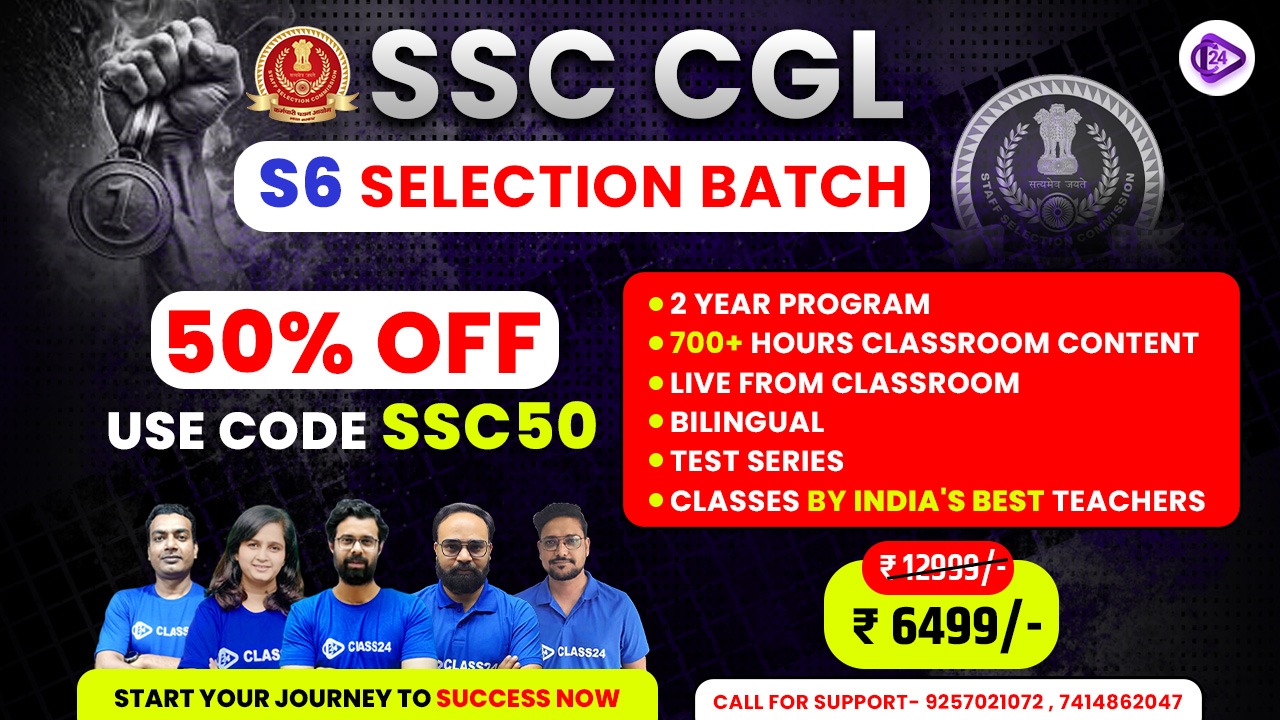1. International North-South Transport Corridor (INSTC)
Russia has promised to eliminate legal and logistical hurdles preventing the International North-South Transport Corridor (INSTC) from becoming the main transport route of Eurasia in the future.
.jpg)
About International North-South Transport Corridor (INSTC):
- INSTC is a multi-modal transportation route linking the Indian Ocean and the Persian Gulf to the Caspian Sea via Iran and onward to northern Europe via St. Petersburg in Russia.
- The corridor includes seaports on the Persian Gulf and in the Caspian region, as well as road and rail routes.
Aim:
- The main purpose of the corridor was to reduce carriage costs and transit time between India and Russia. The transit time is expected to reduce to almost half, once the corridor becomes fully functional.
Development:
- It was first mooted in 2000. The idea was to build a transport corridor linking Russia’s Baltic Sea coast to India’s western ports in the Arabian Sea via Iran.
- Russia, India and Iran signed preliminary agreements to develop the 7,200-km-long International North-South Transport Corridor (NSTC) in 2002.
- Three years later, Azerbaijan signed up for the project.
- This agreement was eventually ratified by 13 countries — India, Russia, Iran, Azerbaijan, Belarus, Bulgaria, Armenia, Kazakhstan, Kyrgyzstan, Oman, Tajikistan, Turkey and Ukraine.
Route:
- The multimodal route begins in Mumbai, India and goes to Bandar Abbas and Bandar-e-Anzali in Iran, then crosses the Caspian Sea to reach Astrakhan, Moscow, and St. Petersburg in Russia.
2. What is a Non-Banking Financial Company (NBFC)?
The Reserve Bank of India recently imposed ₹20 lakh monetary penalty on Manappuram Finance for non-compliance with certain provisions of Non-Banking Financial Company (NBFC).
.jpg)
About Non-Banking Financial Company (NBFC):
- An NBFC is a company registered under the Companies Act 1956engaged in the business of loans and advances, acquisition of shares/stocks/bonds/debentures/securities issued by the Government or local authority or other marketable securities of a like nature.
- They offer various banking services but do not have a banking license.
- They provide banking services like loans, credit facilities, TFCs, retirement planning, investing and stocking in the money market.
- Generally, these institutions are not allowed to take traditional demand deposits—readily available funds, such as those in checking or savings accounts—from the public.
- NBFCs also provide a wide range of monetary advice like chit-reserves and advances.
Regulation:
- NBFCs are regulated by the Reserve Bank of India (RBI), the central bank of India.
- The RBI has the authority to issue licenses to NBFCs, regulate their operations, and ensure that they adhere to the established norms and regulations.
- Banks vs NBFCs: NBFCs lend and make investments and, hence their activities are akin to that of banks; however, there are a few differences as given below,
NBFC cannot accept demand deposits;
- NBFCs do not form part of the payment and settlement system and cannot issue cheques drawn on itself;
- Deposit insurance facility of Deposit Insurance and Credit Guarantee Corporation is not available to depositors of NBFCs, unlike in case of banks.
- Unlike banks, NBFCs are not subjected to stringent and substantial regulations.
- Examples of NBFCs include investment banks, mortgage lenders, money market funds, insurance companies, equipment leasing companies, infrastructure finance companies, hedge funds, private equity funds, and P2P lenders.
3. Alligator gar fish
Recently, the Jammu and Kashmir Lake Conservation and Management Authority (LCMA) during the routine de-weeding process caught a non-native alligator garfish in Dal Lake.
.jpg)
About Alligator garfish:
- It is a close relative of the bowfin species
- It is known for its crocodile-like head and razor-sharp teeth.
- It is a ray-finned euryhaline fish and is one of the biggest freshwater fish in North America and the largest species in the ‘gar’ family.
- This garfish grows rapidly and has a life span of 20-30 years.
- They can even sustain in the cold waters they mostly live in is 11-23 degrees Celsius.
- Geographical distribution: Normally found in northern and central America and also in Mexico.
Threats: It is a predator fish and a carnivore; it can eat all types of fish and therefore poses a threat to native species and the overall ecosystem.
Key facts about Dal Lake
- It is a lake in Srinagar, the summer capital of Jammu and Kashmir.
- It is surrounded by the Pir Panjal mountains.
- The lake is part of a natural wetland which covers 21.1 square kilometres (8.1 sq. mi), including its floating gardens.
- The floating gardens, known as “Raad” in Kashmiri, blossom with lotus flowers during July and August.
- The wetland is divided by causeways into four basins; Gagribal, Lokut Dal, Bod Dal and Nagin (although Nagin is also considered an independent lake).
Islands:
- Dal Lake includes 3 islands, 2 of which are marked with beautiful Chinar trees.
- The island located on the Lakut Dal is known as Roph Lank(Silver Island) and is marked by the presence of majestic Chinar trees at the four corners, thus known as Char-Chinari (Four Chinars).
- The second Chinar Island, known as Sone Lank (Gold Island), is located on the Bod Dal (Big Dal) and overlooks the holy shrine of Hazratbal.
- Dal Lake is also popular for the floating market (known as Raad) where vendors have their own Shikaras and approach tourists.
4. Solar Ultraviolet Imaging Telescope (SUIT)
Recently, the Solar Ultraviolet Imaging Telescope (SUIT), a unique space telescope developed by Pune’s Inter-University Center for Astronomy and Astrophysics (IUCAA) has been delivered to the Indian Space Research Organisation (ISRO).
.jpg)
About Solar Ultraviolet Imaging Telescope (SUIT)
- The telescope is one of the seven payloads on Aditya-L1.
Features
- It is unique because it will provide full disk images of the sun in 2000 to 4000 A wavelength range which has never been obtained.
- It will allow us to record images in this wavelength crucial for maintaining the Ozone and Oxygen content in the atmosphere of the Earth.
- It will also measure the UV radiation hazardous for skin cancer.
- It will address fundamental questions such as the existence of a higher-temperature atmosphere above the cooler surface of the Sun and the origin and variation of near-ultraviolet radiation and high-energy solar flares.
- It will help in the measurement of solar radiation from Hard X-ray to Infrared, as well as in-situ measurements of particles in the solar wind, including the Sun’s magnetic field at the L1 point.
- It is expected to last five years.
Funding: ISRO funded the initial Rs 25 crore required for the hardware, a small portion of the overall project.
Key points about Aditya-L1 Mission
- It is India's first dedicated scientific mission to study the Sun.
- The spacecraft will be placed in a halo orbit around the first Lagrange point, L1, which is 1.5 million km from the Earth towards the Sun.
- A satellite around the L1 point has the major advantage of continuously viewing the Sun without occultation/eclipses.
- Aditya-L1 carries seven payloads to observe the photosphere, chromosphere, and the outermost layers of the Sun (the corona) using electromagnetic and particle detectors.
- The satellite will be launched by a PSLV-XL launch vehicle from Sriharikota.
5. GoI-UNSDC framework
Recently, NITI Aayog and the United Nations in India signed the Government of India - United Nations Sustainable Development Cooperation Framework 2023-2027.
.jpg)
About the GoI-UNSDC framework:
- It represents the UN development system’s collective offer to the Government of India, in line with the national vision for development, for the achievement of the Sustainable Development Goals, promoting gender equality, youth empowerment and human rights.
- It is built on four strategic pillars derived from the 2030 Agenda – People, Prosperity, Planet and Participation.
- The four interlinked pillars have six outcome areas focusing on Health and Well Being; Nutrition and Food Security; Quality Education; Economic Growth and Decent Work; Environment, Climate, WASH and Resilience; and Empowering People,
Communities, and Institutions.
- It will have a specific focus on SDG localisation and South-South cooperation, in line with India’s leadership towards the implementation and acceleration of the SDGs; and India’s championing of South-South cooperation.
- The implementation and monitoring: It will be co-led by the Government of India and the United Nations, India through a Joint Steering Committee.
As always, if you have any questions or feedback, we’d love to hear from you. You can reach us on [email protected] or
Call support - +91 78498 41445,+91 83029 72601,+91 78775 18210
- Download Class24 App for Updated Current Affairs, Free Topic-Wise Quizzes, and Free Mini Mocks
- Download Free Study Material Here
Let's connect with CLASS24
🚀 Download the Class24 App here:
Related Article: Best Online learning platform in India
1. अंतर्राष्ट्रीय उत्तर-दक्षिण परिवहन गलियारा (आईएनएसटीसी)
रूस ने भविष्य में अंतर्राष्ट्रीय उत्तर-दक्षिण परिवहन गलियारे (आईएनएसटीसी) को यूरेशिया का मुख्य परिवहन मार्ग बनने से रोकने वाली कानूनी और तार्किक बाधाओं को खत्म करने का वादा किया है।
.jpg)
अंतर्राष्ट्रीय उत्तर-दक्षिण परिवहन गलियारे (आईएनएसटीसी) के बारे में:
- आईएनएसटीसी हिंद महासागर और फारस की खाड़ी को ईरान के माध्यम से कैस्पियन सागर और रूस में सेंट पीटर्सबर्ग के माध्यम से उत्तरी यूरोप से जोड़ने वाला एक बहु-मोडल परिवहन मार्ग है।
- गलियारे में फारस की खाड़ी और कैस्पियन क्षेत्र में बंदरगाह, साथ ही सड़क और रेल मार्ग शामिल हैं।
उद्देश्य:
- गलियारे का मुख्य उद्देश्य भारत और रूस के बीच गाड़ी की लागत और पारगमन समय को कम करना था। कॉरिडोर के पूरी तरह कार्यात्मक होने के बाद पारगमन समय लगभग आधा होने की उम्मीद है।
विकास:
- यह पहली बार 2000 में पेश किया गया था। विचार यह था कि रूस के बाल्टिक सागर तट को ईरान के माध्यम से अरब सागर में भारत के पश्चिमी बंदरगाहों से जोड़ने वाला एक परिवहन गलियारा बनाया जाए।
- रूस, भारत और ईरान ने 2002 में 7,200 किलोमीटर लंबे अंतर्राष्ट्रीय उत्तर-दक्षिण परिवहन गलियारे (एनएसटीसी) को विकसित करने के लिए प्रारंभिक समझौतों पर हस्ताक्षर किए थे।
- तीन साल बाद, अज़रबैजान ने परियोजना के लिए हस्ताक्षर किए।
- इस समझौते को अंततः 13 देशों - भारत, रूस, ईरान, अजरबैजान, बेलारूस, बुल्गारिया, आर्मेनिया, कजाकिस्तान, किर्गिस्तान, ओमान, ताजिकिस्तान, तुर्की और यूक्रेन द्वारा अनुमोदित किया गया था।
मार्ग:
- मल्टीमॉडल मार्ग मुंबई, भारत में शुरू होता है और ईरान में बंदर अब्बास और बंदर-ए-अंजाली तक जाता है, फिर रूस में एस्ट्राखान, मॉस्को और सेंट पीटर्सबर्ग तक पहुंचने के लिए कैस्पियन सागर को पार करता है।
2. एक गैर-बैंकिंग वित्तीय कंपनी (एनबीएफसी) क्या है?
भारतीय रिजर्व बैंक ने हाल ही में गैर-बैंकिंग वित्तीय कंपनी (एनबीएफसी) के कुछ प्रावधानों का अनुपालन नहीं करने के लिए मणप्पुरम फाइनेंस पर 20 लाख रुपये का मौद्रिक जुर्माना लगाया है।
.jpg)
गैर-बैंकिंग वित्तीय कंपनी (एनबीएफसी) के बारे में:
- एनबीएफसी कंपनी अधिनियम 1956 के तहत पंजीकृत एक कंपनी है जो ऋण और अग्रिम, सरकार या स्थानीय प्राधिकरण द्वारा जारी शेयरों / स्टॉक / बॉन्ड / डिबेंचर / प्रतिभूतियों के अधिग्रहण या इसी तरह की अन्य विपणन योग्य प्रतिभूतियों के व्यवसाय में संलग्न है।
- वे विभिन्न बैंकिंग सेवाएं प्रदान करते हैं लेकिन उनके पास बैंकिंग लाइसेंस नहीं है।
- वे मुद्रा बाजार में ऋण, क्रेडिट सुविधाएं, टीएफसी, सेवानिवृत्ति योजना, निवेश और स्टॉकिंग जैसी बैंकिंग सेवाएं प्रदान करते हैं।
- आम तौर पर, इन संस्थानों को जनता से पारंपरिक मांग जमा लेने की अनुमति नहीं है - आसानी से उपलब्ध धन, जैसे कि चेकिंग या बचत खातों में।
- एनबीएफसी चिट-रिजर्व और अग्रिम जैसी मौद्रिक सलाह की एक विस्तृत श्रृंखला भी प्रदान करते हैं।
नियम:
- एनबीएफसी को भारतीय रिजर्व बैंक (आरबीआई), भारत के केंद्रीय बैंक द्वारा विनियमित किया जाता है।
- आरबीआई के पास एनबीएफसी को लाइसेंस जारी करने, उनके संचालन को विनियमित करने और यह सुनिश्चित करने का अधिकार है कि वे स्थापित मानदंडों और विनियमों का पालन करें।
- बैंक बनाम एनबीएफसी: एनबीएफसी उधार देते हैं और निवेश करते हैं और इसलिए उनकी गतिविधियां बैंकों के समान हैं; हालाँकि, नीचे दिए गए कुछ अंतर हैं,
एनबीएफसी मांग जमा स्वीकार नहीं कर सकता है;
- एनबीएफसी भुगतान और निपटान प्रणाली का हिस्सा नहीं हैं और स्वयं तैयार किए गए चेक जारी नहीं कर सकते हैं;
- जमा बीमा और ऋण गारंटी निगम की जमा बीमा सुविधा बैंकों के विपरीत, एनबीएफसी के जमाकर्ताओं के लिए उपलब्ध नहीं है।
- बैंकों के विपरीत, एनबीएफसी को कड़े और पर्याप्त नियमों के अधीन नहीं किया जाता है।
- एनबीएफसी के उदाहरणों में निवेश बैंक, बंधक ऋणदाता, मनी मार्केट फंड, बीमा कंपनियां, उपकरण पट्टे पर देने वाली कंपनियां, बुनियादी ढांचा वित्त कंपनियां, हेज फंड, निजी इक्विटी फंड और पी 2 पी उधारदाता शामिल हैं।
3. मगरमच्छ गार मछली
हाल ही में, जम्मू-कश्मीर झील संरक्षण और प्रबंधन प्राधिकरण (एलसीएमए) ने नियमित डी-वीडिंग प्रक्रिया के दौरान डल झील में एक गैर-देशी मगरमच्छ गारफिश को पकड़ा था।
.jpg)
मगरमच्छ गार्फिश के बारे में:
- यह बोफिन प्रजाति का करीबी रिश्तेदार है
- यह अपने मगरमच्छ जैसे सिर और रेजर-नुकीले दांतों के लिए जाना जाता है।
- यह एक रे-फिन्ड यूरीहैलाइन मछली है और उत्तरी अमेरिका की सबसे बड़ी मीठे पानी की मछली में से एक है और 'गार' परिवार में सबसे बड़ी प्रजाति है।
- यह गार्फिश तेजी से बढ़ती है और इसका जीवनकाल 20-30 साल होता है।
- वे ठंडे पानी में भी रह सकते हैं जिसमें वे ज्यादातर रहते हैं 11-23 डिग्री सेल्सियस।
- भौगोलिक वितरण: आम तौर पर उत्तरी और मध्य अमेरिका और मेक्सिको में भी पाया जाता है।
खतरे: यह एक शिकारी मछली और एक मांसाहारी है; यह सभी प्रकार की मछलियों को खा सकता है और इसलिए देशी प्रजातियों और समग्र पारिस्थितिकी तंत्र के लिए खतरा पैदा करता है।
डल झील के बारे में मुख्य तथ्य
- यह जम्मू और कश्मीर की ग्रीष्मकालीन राजधानी श्रीनगर में एक झील है।
- यह पीर पंजाल पर्वत से घिरा हुआ है।
- झील एक प्राकृतिक आर्द्रभूमि का हिस्सा है जो 21.1 वर्ग किलोमीटर (8.1 वर्ग मील) को कवर करती है, जिसमें इसके तैरते हुए बगीचे भी शामिल हैं।
- तैरते हुए बगीचे, जिन्हें कश्मीरी में "राड" के रूप में जाना जाता है, जुलाई और अगस्त के दौरान कमल के फूलों से खिलते हैं।
- आर्द्रभूमि को चार बेसिनों में विभाजित किया गया है; गागरीबाल, लोकुत दल, बोद दाल और नागिन (हालांकि नागिन को एक स्वतंत्र झील भी माना जाता है)।
द्वीपसमूह:
- डल झील में 3 द्वीप शामिल हैं, जिनमें से 2 को सुंदर चिनार के पेड़ों के साथ चिह्नित किया गया है।
- लाकुट दाल पर स्थित द्वीप को रोफ लैंक (सिल्वर आइलैंड) के रूप में जाना जाता है और इसे चार कोनों पर राजसी चिनार पेड़ों की उपस्थिति से चिह्नित किया जाता है, इस प्रकार चार-चिनारी (चार चिनार) के रूप में जाना जाता है।
- दूसरा चिनार द्वीप, जिसे सोन लंक (गोल्ड आइलैंड) के नाम से जाना जाता है, बोद दाल (बिग डल) पर स्थित है और हजरतबल के पवित्र मंदिर को देखता है।
- डल झील फ्लोटिंग मार्केट (जिसे राड के नाम से जाना जाता है) के लिए भी लोकप्रिय है, जहां विक्रेताओं के पास अपने शिकारा हैं और पर्यटकों से संपर्क करते हैं।
4. सौर पराबैंगनी इमेजिंग टेलीस्कोप (सूट)
हाल ही में, पुणे के इंटर-यूनिवर्सिटी सेंटर फॉर एस्ट्रोनॉमी एंड एस्ट्रोफिजिक्स (आईयूसीएए) द्वारा विकसित एक अद्वितीय अंतरिक्ष दूरबीन, सौर पराबैंगनी इमेजिंग टेलीस्कोप (सूट) को भारतीय अंतरिक्ष अनुसंधान संगठन (इसरो) को दिया गया है।
.jpg)
सौर पराबैंगनी इमेजिंग टेलीस्कोप (SUIT) के बारे में
- टेलीस्कोप आदित्य-एल 1 पर सात पेलोड में से एक है।
सुविधाऐं
- यह अद्वितीय है क्योंकि यह 2000 से 4000 ए तरंग दैर्ध्य सीमा में सूर्य की पूर्ण डिस्क छवियां प्रदान करेगा जो कभी प्राप्त नहीं किया गया है।
- यह हमें पृथ्वी के वायुमंडल में ओजोन और ऑक्सीजन सामग्री को बनाए रखने के लिए महत्वपूर्ण इस तरंग दैर्ध्य में छवियों को रिकॉर्ड करने की अनुमति देगा।
- यह त्वचा कैंसर के लिए खतरनाक यूवी विकिरण को भी मापेगा।
- यह सूर्य की ठंडी सतह के ऊपर उच्च तापमान वाले वातावरण के अस्तित्व और निकट-पराबैंगनी विकिरण और उच्च ऊर्जा सौर ज्वालाओं की उत्पत्ति और भिन्नता जैसे मौलिक प्रश्नों को संबोधित करेगा।
- यह हार्ड एक्स-रे से इन्फ्रारेड तक सौर विकिरण के माप में मदद करेगा, साथ ही एल 1 बिंदु पर सूर्य के चुंबकीय क्षेत्र सहित सौर हवा में कणों के इन-सीटू माप में मदद करेगा।
- इसके पांच साल तक चलने की उम्मीद है।
फंडिंग: इसरो ने हार्डवेयर के लिए आवश्यक प्रारंभिक 25 करोड़ रुपये का वित्त पोषण किया, जो समग्र परियोजना का एक छोटा सा हिस्सा है।
आदित्य-एल1 मिशन के बारे में मुख्य बातें
- यह सूर्य का अध्ययन करने के लिए भारत का पहला समर्पित वैज्ञानिक मिशन है।
- अंतरिक्ष यान को पहले लैग्रेंज बिंदु, एल 1 के चारों ओर एक प्रभामंडल कक्षा में रखा जाएगा, जो पृथ्वी से सूर्य की ओर 1.5 मिलियन किमी दूर है।
- एल 1 बिंदु के आसपास एक उपग्रह को बिना किसी रहस्य / ग्रहण के सूर्य को लगातार देखने का प्रमुख लाभ है।
- आदित्य-एल 1 में इलेक्ट्रोमैग्नेटिक और पार्टिकल डिटेक्टरों का उपयोग करके फोटोस्फीयर, क्रोमोस्फीयर और सूर्य (कोरोना) की सबसे बाहरी परतों का निरीक्षण करने के लिए सात पेलोड होते हैं।
- उपग्रह को श्रीहरिकोटा से पीएसएलवी-एक्सएल प्रक्षेपण यान द्वारा प्रक्षेपित किया जाएगा।
5. भारत सरकार-यूएनएसडीसी ढांचा
हाल ही में, भारत में नीति आयोग और संयुक्त राष्ट्र ने भारत सरकार - संयुक्त राष्ट्र सतत विकास सहयोग फ्रेमवर्क 2023-2027 पर हस्ताक्षर किए।
.jpg)
भारत सरकार-UNSDC ढांचे के बारे में:
- यह सतत विकास लक्ष्यों की प्राप्ति, लैंगिक समानता, युवा सशक्तिकरण और मानवाधिकारों को बढ़ावा देने के लिए विकास के लिए राष्ट्रीय दृष्टि के अनुरूप भारत सरकार को संयुक्त राष्ट्र विकास प्रणाली की सामूहिक पेशकश का प्रतिनिधित्व करता है।
- यह 2030 एजेंडा से प्राप्त चार रणनीतिक स्तंभों पर बनाया गया है - लोग, समृद्धि, ग्रह और भागीदारी।
- चार परस्पर जुड़े स्तंभों में स्वास्थ्य और कल्याण पर ध्यान केंद्रित करने वाले छह परिणाम क्षेत्र हैं; पोषण और खाद्य सुरक्षा; गुणवत्तापूर्ण शिक्षा; आर्थिक विकास और सभ्य काम; पर्यावरण, जलवायु, WASH और लचीलापन; और लोगों को सशक्त बनाना,
समुदाय, और संस्थान।
- इसमें एसडीजी स्थानीयकरण और दक्षिण-दक्षिण सहयोग पर विशेष ध्यान दिया जाएगा, जो एसडीजी के कार्यान्वयन और त्वरण की दिशा में भारत के नेतृत्व के अनुरूप होगा; और भारत का दक्षिण-दक्षिण सहयोग का समर्थन करना।
- कार्यान्वयन और निगरानी: इसका सह-नेतृत्व भारत सरकार और संयुक्त राष्ट्र, भारत द्वारा एक संयुक्त संचालन समिति के माध्यम से किया जाएगा।










